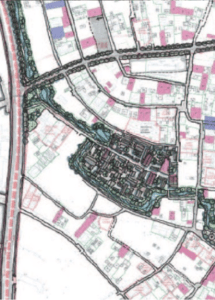Top Story
Hutong Restoration: A Template for Heritage Protection - Advisory Services Panel
April 11, 2018
Location: Qianmen Hutong, Beijing, China
Sponsor: City of Beijing and Hong Kong Land
Subject Area: Revitalization and Historic Preservation
Panel Chair: Sir Ian Hawksworth, Chief Executive, Capital & Counties Properties PLC (Capco), London, United Kingdom
Background
At the request of the City of Beijing and Hong Kong, this panel focused on Qianmen East, a 56-hectare inner-city neighborhood just southeast of Tiananmen Square. Qianmen East is a hutong neighborhood: these neighborhoods consisted of interlinked communities of low-rise courtyard homes aligned in sequence along narrow ‘hutong’ alleys. The panel’s overarching strategy was to create modern living and working facilities while retaining the vitality and feel of a centuries-old neighborhood. The panel provided specific recommendations on innovative adaptive use strategies for the older courtyard homes
Summary of Recommendations
- Plans to restrict population density of the area to its current level or lower should be abandoned. Successful redevelopment will ultimately be a function of creating a sustainable and thriving community within the hutong. This will require a significant influx of new residents.
- The area should aim for a diverse mix of residents by adding younger middle-class professionals together with an arts and crafts component to the existing base of older working-class inhabitants. Gentrification may become an issue over time, and steps should be taken to prevent lower-income residents being pushed out.
- From a design perspective, the overarching strategy should be to create modern living and working facilities while retaining the vitality and feel of a centuries-old neighborhood. Planners should commit to high-quality, long-term conservation that reintegrates areas now isolated by new road infrastructure in the area. In particular, planners should focus on repurposing the hutong’s bigger roads and ensuring a free flow of pedestrian traffic via its traditional narrow lanes.
- Qianmen East should be subdivided into four quadrants, each featuring a particular theme serving as a catalyst for future development. Suggested catalysts include a shopping street, a district for arts and crafts and community centre facilities, a private housing district anchored by an ongoing luxury hotel development, and an area focusing on medical care facilities (also pre-existing). A final catalyst would be promotion of the area as a pilot programme for implementation of car-free zones and autonomous vehicles.
- Redevelopment should be approached as an organic process taking place over a period of years. In this respect, heritage projects are not the same as commercial developments, where speed is seen as a priority. Building a community takes time and should be seen as an ongoing activity.




